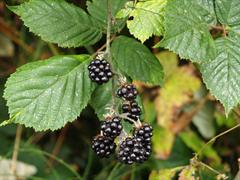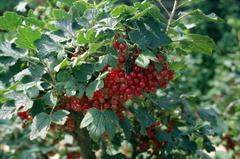Become a Berry Fruit Expert
 Berry fruits are popular the world over. Some berries are grown widely, in different climates and countries (eg. strawberries), whilst others might be popular in some regions but not others.
Berry fruits are popular the world over. Some berries are grown widely, in different climates and countries (eg. strawberries), whilst others might be popular in some regions but not others.
This course provides a sound broad based training for commercial growers and/or staff of berry farms. It is equally relevant to the enthusiast hobby grower who wants to get more serious about growing berry fruits.
The aims of the course are:
- Differentiate between different types of berry fruit cultivars.
- Determine varieties of berry fruit suitable for growing in a specified locality.
- Explain the cultural treatment for a range of berry fruits, in specified situations.
- Determine how to propagate a range of different berry plants.
- Explain the harvesting of different berry crops.
- Develop strategies for commercial success in a berry fruit enterprise.
Course Content and Structure
There are 8 lessons in this course:
- Introduction
- Review of the system of plant identification
- Plant Families, Species, Cultivars, Varieties
- What is a Berry -Botanical Characteristics (Simple fruits, Compound Fruits)
- Information contacts (ie: nurseries, seed, clubs etc.)
- Which Varieties to Grow
- Site Selection,
- How much land
- Site Characteristics
- Climate
- Winter Chilling Requirements
- Biological Considerations
- Further Considerations affecting what to Grow
- Review of Significant Berries including
- Blackcurrant
- Blueberry
- Bramble berry
- Blackberry
- Other Rubus species
- Cranberry
- Gooseberry
- Grape
- Kiwi Fruit
- Passionfruit
- Raspberry
- Strawberry
 Lesser Grown Varieties of Berry Plants
Lesser Grown Varieties of Berry Plants
- Alpine Strawberry
- Cape Gooseberry
- Elderberry
- Goji berry
- Guava
- Hardy Kiwi Fruit
- Lignoberry
- Pepino
- Tree Tomato
- Mulberry
- Production Plan for Berry Cropping
- Culture
- Soils
- Planting
- Staking
- Mulching
- Watering
- Pest and disease
- Feeding
- Pruning
- Protection from wind, salt, air, etc.
- Propagation
- Methods of propagating berries
- Seed, Cuttings, Layering
- Aids to Propagation
- Hardening off Young Plants
- Propagation of selected varieties
- Weed Control and Irrigation
- What is a Weed
- How Weeds Spread
- Preventative methods of Control
- Eliminating growing weeds
- Identifying Weeds
- Water Infiltration and Retention
- Drainage
- Improving water Infiltration
- Soil Moisture Classes
- Measuring Water Available to Plants
- When to Irrigate
- Irrigating Berry Crops
- Harvesting and Marketing Berries
- Harvesting -timing and method
- Understanding Fruit Ripening
- Harvesting Techniques
- Post Harvest Treatments
- Commercial Berry Growing
- Marketing Berries
- The Marketing Process
- Understanding Supply and Demand
- Cost, Quality and Quantity characteristics in a Crop
- Farm Layout for Better Management
This course is a great starting point.
What Are You Wanting to Grow?
There may be lots of different berries you are considering growing, before starting this course. On completing studies though, you will have probably become aware of others you haven't even considered; and have discovered a great deal more about those you are already aware of.

The Most Popular Berry
Strawberries are the most popular berry, the world over, both to grow and to eat. They can be grown in a wide range of climates ranging from temperate climates to cooler positions in tropical areas; and are well suited to growing as a greenhouse crop anywhere if temperature conditions are controlled. Many people grow strawberries in the ground, and others grow them in containers filled with potting media, or in hydroponics.
Commercially, they are a significant horticultural crop in many countries, as well as a popular crop for home gardeners.
Strawberries bear fruit for up to six months, with each plant yielding up to half a kilogram of delicious fruit each year. Strawberries are used fresh, marketed frozen, processed in foods such as jam and ice cream, or used to flavour drinks such as milkshakes.
They will benefit from protection against frosts, and against cold and wet conditions during autumn or steamy wet conditions that would encourage fungal rots and other diseases. Movable plastic tunnels known as cloches can give some protection and controlled environment hot houses. A bird net will make sure you get the fruit and not the birds!
Strawberries prefer deep, well drained, slightly acid soils, but avoid heavy clay soils. They are heavy feeders, so apply of large amounts of well-rotted organic matter such as composts and manures, prior to planting – but don’t add too much nitrogen rich fertilizer as you will get a lot of leaf growth at the expense of fruit. Side dressings of blood and bone or cow manure, with a couple of hands of sulphate of potash added per bucket, to stimulate fruit set and applied during active growth periods are also beneficial. Regular watering is also important for good fruit production.
If your soil quality is poor these plants can be grown in quality potting mix and compost in a raised garden bed or large container and if they are mulched with straw then you do not even have to weed them)!
Strawberries are usually planted form runners in the autumn or late winter. You can buy young plants in pots in spring too, and they may already be fruiting. This is a more expensive option, but is especially rewarding for children.
Installing a trickle irrigation system with individual drippers to each plant will give much higher yields in summer to autumn in warm climates or during dry spells. This type of irrigation allows plants to be picked whilst watering, discourages weed growth and stops fruit loss from Botrytis (grey mould). This system should operate for a period of 4-6 hours, preferably at night throughout summer. Strawberries need 25 mm of water a week. If temperatures rise above 33°c overhead watering for short periods (15 min) helps reduce temperatures.
In order to reduce the chance of weed problems around your crop, use black polythene plastic mulch around the base of each plant. Some weeds may still get through and must be regularly removed by hand. In walkways near crops, weeds can either be chipped or sprayed (using a flood jet nozzle) with a desiccant type of herbicide (one which starves the weeds of chlorophyll), but be sure not to get any chemical on the strawberry plants. Other ways of controlling weeds include mulched wood chips, saw dust or leaves.
Some pests can occur; and commercial crops may be sprayed or treated in other ways to minimize pest damage.
Strawberries grown in hydroponics tend to be less susceptible to weed and pest problems; and may be more easily grown chemical free.
Learning the Common Ground
There are many aspects to growing, harvesting and using berries that are common to all types of berries. When you learn about the culture or harvest and use of one type of berry, you have a foundation for understanding how to deal with many others. There are however, also many things that are unique to each type of berry; and appreciating those unique characteristics is just as important as understanding any commonality.
Who Should Do this Course?
- Berry growers or anyone aspiring to work on a berry farm
- Horticulturists of all types seeking to broaden or deepen their knowledge of berry fruit growing
- Hobby farmers, home gardeners, permaculturists, sustainable lifestylers or anyone else with a passion and need to know and understand more about growing berries
Why a Course?
You may be able to buy a book and gather together information about berries; but doing a course like this is more than just gathering information about berries. Through this study, you will develop a deeper understanding, exploring berries in different contexts that have a specific relevance to you. You will interact with professional horticulture tutors. Studying with us at ACS is all about affecting your long term memory and long term capacity to grow a wide variety of berries in a wide variety of ways.
MEET OUR EXPERTS
|
|
|
|
John L. Mason Dip.Hort.Sc., Sup'n Cert., FIOH, FPLA, MAIH, MACHPER, MASA
Author of the best selling book "Commercial Hydroponics", started teaching and practicing hydroponics in the early 1970's. Has worked across many areas of horticulture for 45 yrs; garden editor for Home Grown Magazine.
|
Dr Lynette Morgan B.Hort.Tech(Hons), PhD in hydroponic greenhouse production
Partner in SUNTEC International Hydroponic Consultants, Lynette is involved in many aspects of hydroponic production, including remote and on site consultancy services for new and existing commercial greenhouse growers worldwide as well as research trials and product development for manufacturers of hydroponic products. Lynette is also the author of 6 hydroponic technical books
|
Bob James QDAH. B. Applied Sc(Hort Tech),Grad Dip. Mgt, M;Sc (Enviro Sc.), PDC.
Bob has over 50 years experience in Government and Private Horticulture and Environmental Management Consulting.
|